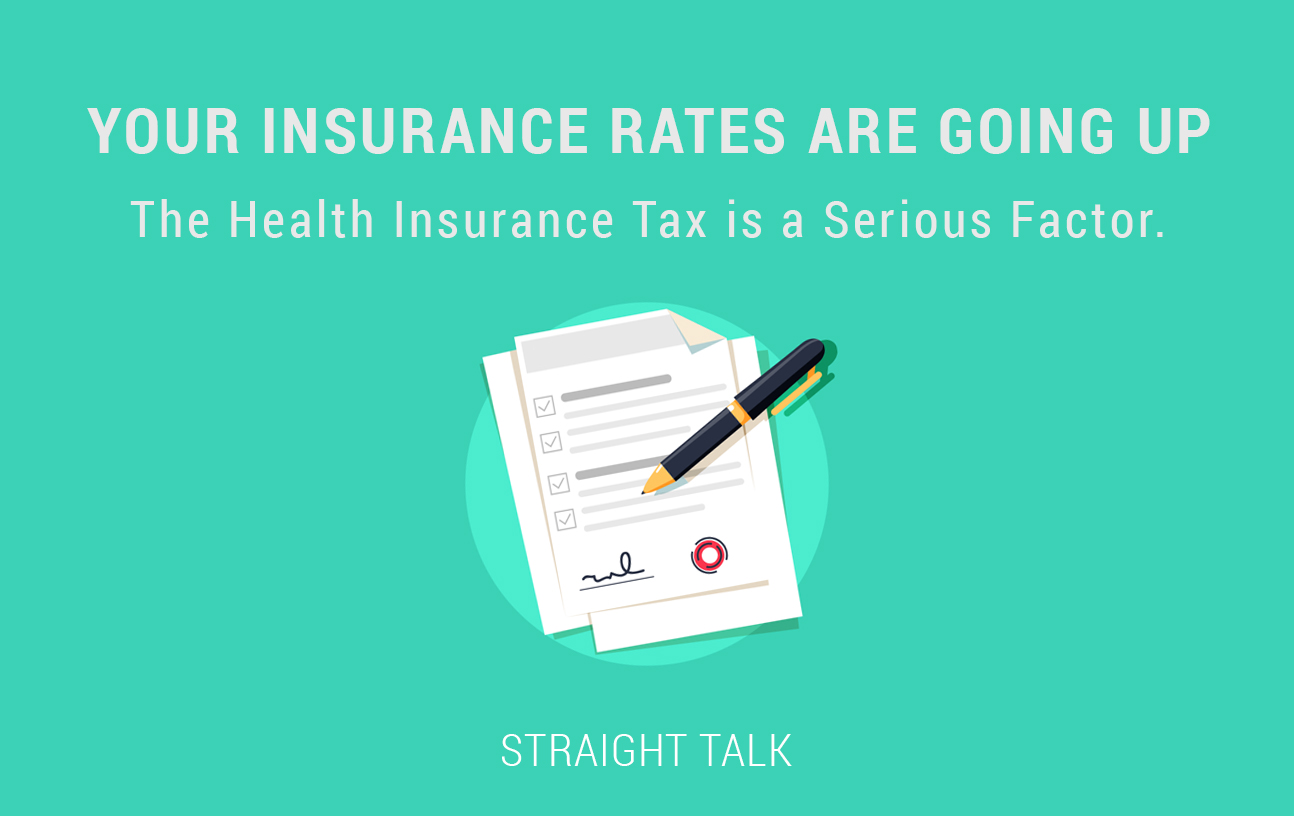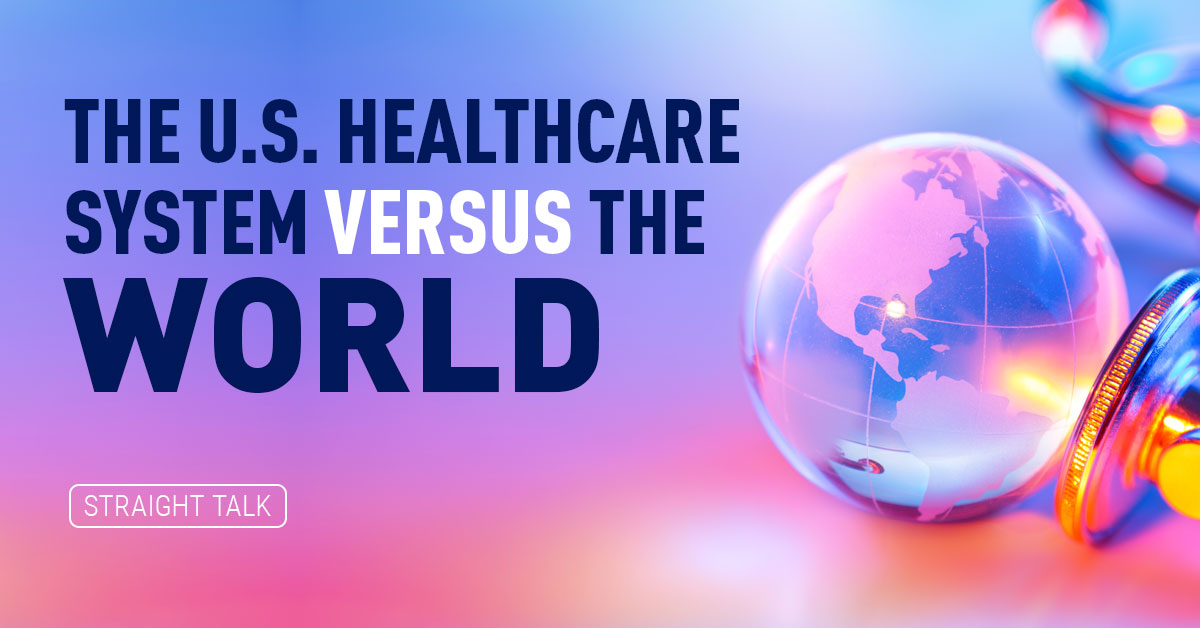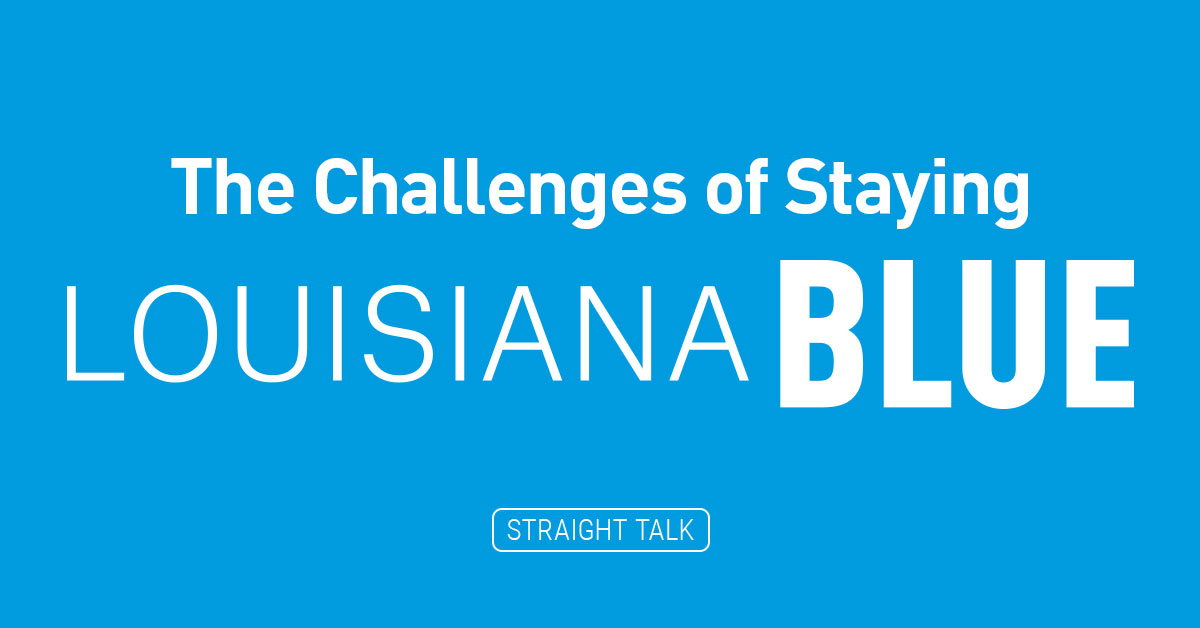Way back in 2009, when lawmakers were negotiating the Affordable Care Act, it was clear that it would cost a lot of money to pay out advanced tax credits, cost-sharing reductions and Medicaid fees for millions of newly covered people. So much money that the authors of the ACA were concerned enough to try and make the ACA revenue neutral.
The authors toyed with a lot of ideas, mostly accounting maneuvers, but they did put in a couple of very solid “revenue raisers” (i.e. taxes). These were designed to recapture money from health insurance companies that the federal government was going to invest in Advanced Premium Tax Credits for people who get their health insurance on healthcare.gov. The biggest new tax was a general assessment on every policyholder of a fully insured group or individual health insurance plan. It was called the Health Insurer Tax, or HIT.
The HIT is not like most taxes we are familiar with. Sales taxes are based on a percentage of the selling price of whatever you are buying. Property taxes are based on the value of your house. Income taxes are a sliding percentage of how much money you make.
But the HIT is not like any of those. It’s sort of a “bucket tax” for insurers that increases every year. It started out as an $8 billion assessment across the nation in 2014. In 2020, that number swells to $16 billion.
Here’s how HIT works
The federal government creates a fixed tax liability each year ($16 billion for 2020), then divides that liability up among all the health insurance companies that have fully insured customers, whether they are individual customers or group customers. The insurance companies are assessed a piece of the liability based on their national market share of fully insured business. Let’s say in 2020 an insurance company has a 1% national market share of fully insured members. That company would have to tax its policyholders enough during 2020 to raise an EXTRA $160 million to send to Washington, D.C., (1% of $16 Billion is $160 million) to satisfy its obligation under the ACA’s HIT. And that’s on top of medical costs, administrative costs and everything else. It’s a pure pass-through assessment on you, the healthcare consumer.
For the past few years, Congress has waived, or at least delayed the tax. They delayed around $14.5 billion back in 2017, for example. Now, Congress hasn’t yet spoken on the issue for 2020, and they are about to go on a recess, so I’m not encouraged that HIT will be waived again. But we don’t know. The result is that Blue Cross had to start building the tax into rates beginning with Jan. 1, 2020 renewals. A measurable portion of rate increases in 2020 will be to cover HIT.
There is still time for Congress to act on HIT, and we’ll let you know if they do. A few years back, they waived the tax AFTER they had let us collect it! We returned it to our members in the form of significant rate decreases between 2018-2019. Most rates in 2020, however, are going to go up because of HIT and normal medical cost trends. You’ll see it when you get your renewal, or shop for coverage on healthcare.gov during open enrollment.
Straight Talk is I wish I had better news for you. But at this time, we have to issue those Jan. 1 renewals, and HIT is the law of the land.





I have seen rate increases every single year; never have I seen any evidence of rate reductions associated with HIT. I just received my rate increase for 2020 and am appalled by the $200/mth increase. I am covering myself, my wife and one adult child age 22 and will be paying $1,813.85 / month. This situation is completely unacceptable.
Gavin! Thanks so much for your comments!
Rate computation can be very complex because so many people have very different insurance financing mechanisms. Let me see if I can help to un-muddy the water a bit.
I’m going to assume from what you’ve described above that you are buying INDIVIDUAL health insurance for yourself and your family, perhaps through healthcare.gov or an outside agent. Here are the things that affect your rate from year to year:
Base rate for your age: When we issued our 2019 contract pricing for individual policies, they were an average of 8% less at each age than the 2018 base rates. Since individual coverage is age-rated, you cannot avoid a federally mandated rate increase every year as you age of 1-2%, which eats into the decrease. These age factors the feds give us accelerate most quickly between the ages of 53 and 64, so if you or your wife are in this range your age factor increase could be more.
ACA-Based pricing: When you buy individual coverage today (since 2014) you are in a block of people who MUST be let into your risk pool no matter what health conditions they have. And they have plenty. Plus the federal requirements of what MUST be covered are quite rich compared to individual coverage pre-2014 and we are required to cover more expensive treatments in your policy every year. AS a result, base individual coverage rates in Louisiana are more than 100% more than they were in 2013. It’s the price of letting everyone in, plus expanded coverage, plus new taxes from DC, all poured onto that Individual market. By way of contrast, small group policies can be significantly cheaper for the exact same coverage because the risk pool is healthier and younger.
ATC Changes: Over time, as your income fluctuates, you might go in and out of eligibility for federal tax credits, which are applied directly to your premiums. This means your premiums go UP as your income goes up; and vice versa.
I wish it was clearer, but these are all the things that have driven prices to where they are today. It took us a long time to get the rates right, and we actually lost $250m over the first three or four years of this program, we are just coming back to break-even now.
Hope this helps, it won’t put any cash in your pocket, but hopefully help you understand more about the individual market under the ACA in 2020.
Do we have a idea of what BCBSLA percentage market share would be in 2020.If so what would the rate increases for 2030 look like percentage wise.
John! This is a very interesting question you are proposing! Let me add a few things….
The actual members that BCBSLA own and control locally represent about 21% of the population of the state of Louisiana. What that will look like in 2030 is completely unknown. As chief forecaster in marketing, I can tell you even projecting out 2 or 3 years in the current healthcare environment can be very difficult. I wouldn’t begin to try and take that out 10 years. So much uncertainty as to make the numbers useless in my opinion. But thanks for the question!….mrb
I don’t know who received our “significant rate decreases between 2018-2019”, because our company didn’t receive it.
Lisa! Thanks so much for your comments!
2019 contract rates for anyone with Blue Cross non-grandfathered individual coverage went down an average of 7-8% (in some cases more).
Fully insured group rates for non-grandfathered small groups also were decreased on 2019 renewals an average of 3-5%.
If your company is large, or self funded, they control what they charge their employees as a % of premiums so rates in that situation may not have decreased. If your company has a grandfathered plan, rates are based more on that company’s experience, so rates could have gone up or down. But the majority of our fully insured customers got significant rate relief in 2019.
thanks!…mrb
Why was this called ‘THE AFFORDABLE CARE”? Since rates are based on age, the older you are the more you pay. For us citizens nearing retirement age we are again choosing food versus medication. This country does not care for its seniors. You might as well line us up in front of a firing squad. Our politicians spend all our tax dollars on trying to impeach a president instead of fixing our country’s problems. I say a new law needs to put in place. If our elected officials can’t do the job, we citizens have the right to fire them. We are paying their salaries after all. If I can’t do my job I get fired!
Please let me know if I’m understanding this correctly. This does not affect Self-Funded?
You may find this article from Oliver Wyman consulting helpful….
https://health.oliverwyman.com/2018/08/new-analysis–how-the-acas-hit-will-impact-2020-premiums.html
thanks!…mrb
Mike, you are the Man!
Thanks for the news on HIT.
I missed seeing you at the Sales Caravan in Lafayette last month.
Hope you are doing well.
Kindest regards, Charlie Williams
People are always so kind to me! Thanks Charlie for hanging in there with all the changes!
It is becoming increasing difficult for our small company to provide benefits for our employee, the greatest asset on our balance sheet. We strive to provide a benefit package that will be cost effective for our employees but these astronomical rates are making that difficult.
It is way beyond time for health care reform, and this plan of taxing those who are providing benefits is unconstitutional! Congress needs to represent all the people not special interest and personal agendas.
Is this taxed assessed for self-funded groups like the Lafayette Parish School Board plan?
Here’s a helpful article on the Health Insurer Tax from Oliver Wyman consultants/actuaries that may help you. Thanks!…mrb
https://health.oliverwyman.com/2018/08/new-analysis–how-the-acas-hit-will-impact-2020-premiums.html
What is Blue Cross of Louisiana’s portion of the HIT tax for 2020?
The assessment we have right now is an estimate. I personally think it will exceed $100m. My two cents….mrb